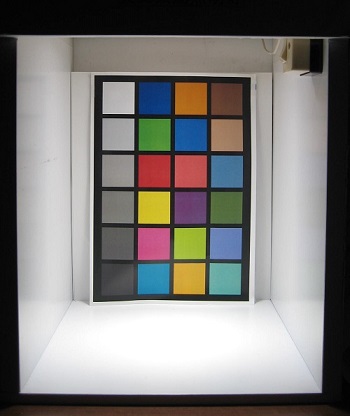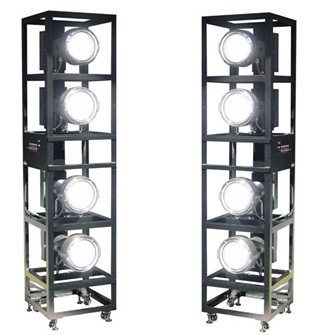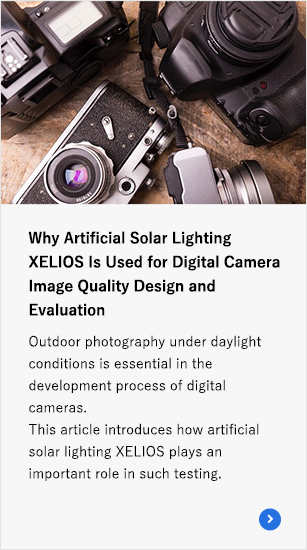
In recent years, the performance of smartphone cameras has improved significantly.
Not only do they produce beautiful images, but they also have features such as automatically taking pictures when a smile is detected, capturing bright images even in low-light environments, and recording videos with 4K, cinema-quality resolution. This makes them comparable to digital cameras in terms of performance.
An important factor supporting these camera features is image quality design. Smartphone manufacturers use XELIOS artificial solar lighting as a standard light source for more accurate color reproduction and higher image quality.
To design and evaluate camera image quality, accurate color reproduction under the correct lighting is essential. We perceive the color of objects by seeing the light reflected from their surfaces.
For example, under bright red light, even white paper appears red. In other words, when the characteristics of light change, the appearance of objects also changes.
Therefore, to properly evaluate the image quality of a smartphone camera, it is important to use “light that is as close as possible to natural light” as the standard light. As artificial solar lighting based on the standards for natural sunlight set by the International Commission on Illumination (CIE), XELIOS is the optimal light source for smartphone image quality design and camera evaluation.
The main reason why XELIOS is chosen for image quality design is that it can provide consistent lighting conditions regardless of time or location.
•Always able to provide uniform illuminance and light spectrum
•Enables stable image quality evaluation unaffected by time of day or weather
•Allows manufacturers to establish a standard for the colors reproduced by smartphone cameras

In camera image quality design, charts (color samples) are photographed under the standard light, and the color reproducibility of the images is quantified and evaluated. By using XELIOS, it is possible to make comparisons and evaluations under accurate lighting conditions, which helps manufacturers establish the image quality standards they require.
In addition to establishing standards, users also use artificial solar lighting for the following purposes.
1.Comparing the camera performance of rival companies’ smartphones with that of their own products.
2.Evaluating how much the performance of a revised camera has improved, or confirming whether the design has improved the performance as intended.
3.Accurately comparing performance with high-pixel-count digital cameras.

The model most commonly chosen by users is the XG-500AF from the XELIOS 500W series. Multiple units of these are used to illuminate the chart.

XELIOS is being used not only on its own, but also increasingly as studio lighting. For example, as shown in the photo below, users can easily attach color temperature conversion filters and diffusers by incorporating multiple units of XELIOS lighting into a frame. This makes it possible to conduct evaluations and tests under various lighting conditions.

•Increased lighting variations enable more precise image quality design
•A highly bright and uniform lighting environment enhances smartphone image quality evaluation

Establishing the correct lighting environment is essential for the development of smartphone displays and cameras. XELIOS artificial solar lighting, as the light source closest to natural sunlight, has been adopted by many smartphone manufacturers.
If you are considering image quality design for cameras or the introduction of standard lighting, please feel free to contact us.



